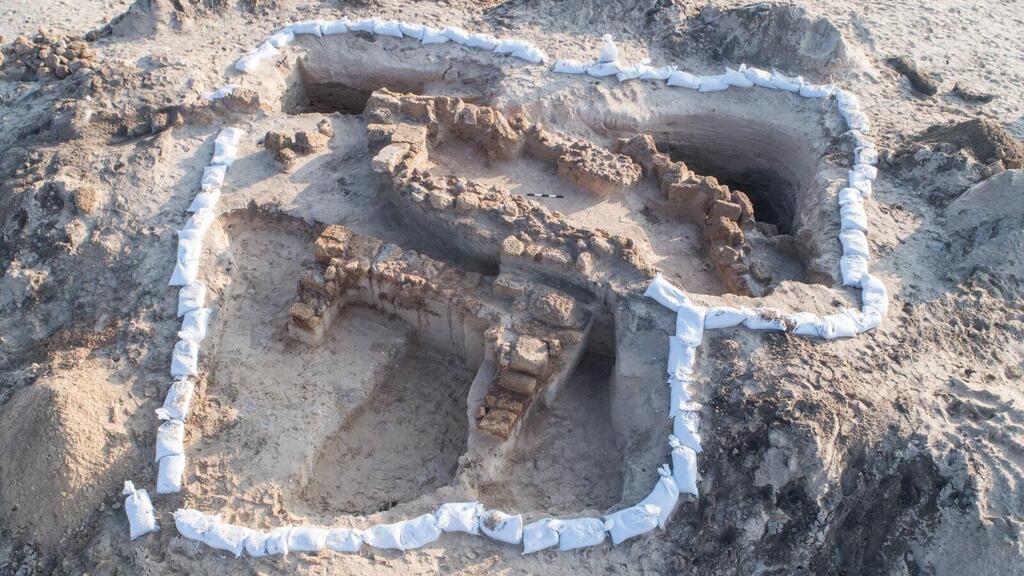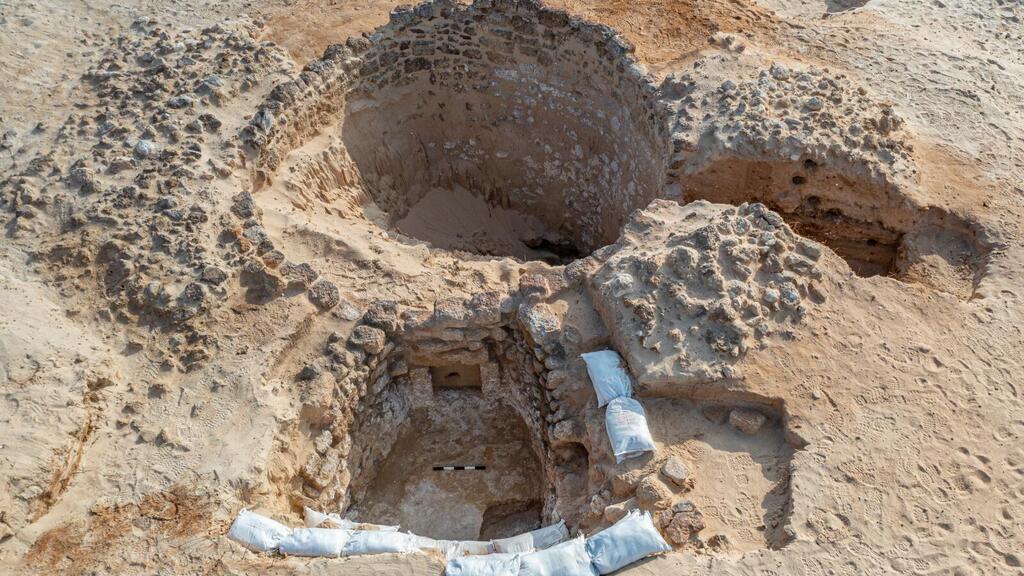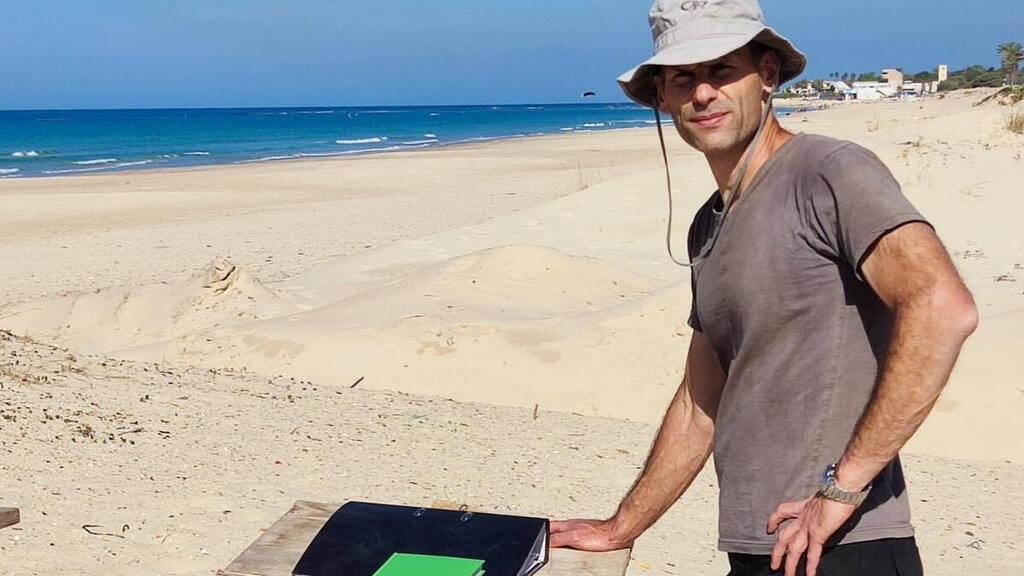Researchers believe that the agricultural plots found in the sands of Caesarea are the first development of sand farming in human history.
"This agricultural technique was developed on the coastal plain of the Land of Israel during the later part of the early Islamic period," claim Prof. Yoel Raskin of the Department of Geography and Environment at Bar-Ilan University and Dr. Itamar Taxel of the Israel Antiquities Authority.
Agriculture in the sands began on the Caesarea coast
(Simulation: Yaakov Shmidov, Israel Antiquities Authority)
Over the course of three seasons between 2020-2022, Raskin and Taxel led an archaeological expedition that involved excavations in Caesarea's sand dunes with the primary goal of uncovering revolutionary agricultural systems.
During the excavation, the digging plots revealed the presence of ancient refuse, such as pottery and glass fragments, rings, and other artifacts dating back to the early Islamic period.
This material was incorporated into the soil to create anthrosol, a dark gray soil resulting from longstanding human activity. The goal was to transform the sandy surface into fertile soil capable of retaining water.
As per the study, the uncovered agricultural system had approximately 370 rectangular boreholes with an average surface area of about two dunams. The system also had storage units, temporary housing for workers, and observation posts situated near the boreholes.
"Based on the estimation and calculation of the volumes of sand that were mixed, it is estimated that the system was built using approximately one million workdays. It is believed that the government initiated the establishment of this agricultural system," say Prof. Raskin and Dr. Taxel. "It's unlikely that fruit trees and grapevines grew here, rather more seasonal crops such as vegetables."
Apart from Raskin and Taxel, researchers from the University of Haifa and the Geological Survey also participated in the study. The study was funded by the Gerda Henkel Stiftung and the Israel Science Foundation.







